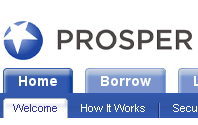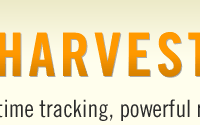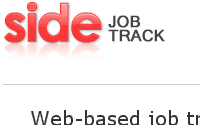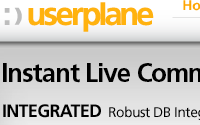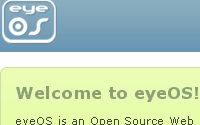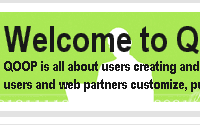
Written by Alex Iskold and edited by Richard MacManus
It's 2007 and no longer do startup employees, or even those of medium-size and large companies, need to be located in the same place. Instead, more and more companies are going virtual. The answer to long commutes, inner city traffic, tapping into creative minds in other geographies and combating global warming is: a 'work from home' policy.
But in order for working from home to be effective, certain things need to be in place. The most critical is technology - a set of tools, along with the infrastructure, that can replace the traditional office. Using these tools it is possible for team members to connect, communicate and execute as effectively as a traditional company. So in this post, we look at software that makes virtual companies possible.
Communication Tools
Pick: Skype; cost: free. Alternatives: Gizmo, Jajah, Google Talk, more...
 The first tool for a virtual company has to be one that replaces face-to-face communication. This is not an easy task, but Skype gets close. This popular software bundles the phone, traditional chat, conferencing and video conferenecing and works on Windows, Mac and Linux. It is powerful to be able to chat and, when necessary, call a team mate. All Skype PC-to-PC calls are free and there are options such as SkypeOut (calling normal telephone numbers) and SkypeIn (gives you a phone number for anywhere in the world).
The first tool for a virtual company has to be one that replaces face-to-face communication. This is not an easy task, but Skype gets close. This popular software bundles the phone, traditional chat, conferencing and video conferenecing and works on Windows, Mac and Linux. It is powerful to be able to chat and, when necessary, call a team mate. All Skype PC-to-PC calls are free and there are options such as SkypeOut (calling normal telephone numbers) and SkypeIn (gives you a phone number for anywhere in the world).

The next useful feature is the ability to transfer files. If you need to send a document or a screenshot, Skype can be faster than email and it is right there. Skype can also be used to conduct meetings. Typically, it would be used in conjunction with screen sharing software (more on that below). Finally, Skype supports video and works with any camera attached to your computer. This is neat, but think twice about what you are wearing before flipping that switch :-)
Presentation
Pick: GotoMeeting; $49 per month, Alternatives: WebEx, BudgetConferencing
 Skype facilitates communication, but it does not allow sharing of screens. It is helpful to complement meetings with real-time screens, particularly if you are brainstorming, talking about design (for example) or simply want to get on the same page faster.
Skype facilitates communication, but it does not allow sharing of screens. It is helpful to complement meetings with real-time screens, particularly if you are brainstorming, talking about design (for example) or simply want to get on the same page faster.
Our recommendation is a simple desktop sharing solution like GotoMeeting, because the features of the higher end services are rarely used and tend to be buggy. GoToMeeting has been around for a while and offers instant desktop sharing which 'just works'. It is written in Java and can run on many platforms. It takes a few minutes to learn the UI, but after that starting new meetings and inviting people is straightforward.
There are quite a few other companies that enable online meetings. One of the 'high end' solutions is WebEx, which has three core offerings - a meeting center, MeetMeNow plan, and pay per use. The meeting center is a comprehensive solution that supports various forms of sharing and interaction between participants. You can share presentations or a full screen, draw on a scratch pad, and chat with the meeting participants. The plans depend on the number of concurrent meeting participants and start at $75. Another alternative is MeetMeNow, which facilitates instant desktop sharing. The cost is $49 per month or $39 if you commit to a full year. Finally the pay per use solution offers exactly that, for 33c per minute per user. However in my experience, WebEx has not been as reliable as GoToMeeting.

Project Management
Pick: Basecamp; $29 per month. Alternatives: CentralDesktop, ActiveCollab (free, but you need to host it), TeamWorkLive, QuickBase
 Project management is essential to the success of any project, let alone a virtual one. Execution requires planning, scheduling, division of tasks and tracking. Basecamp from 37signals is an excellent tool that encapsulates the essential elements of project management.
Project management is essential to the success of any project, let alone a virtual one. Execution requires planning, scheduling, division of tasks and tracking. Basecamp from 37signals is an excellent tool that encapsulates the essential elements of project management.

The Basecamp main screen presents a dashboard view of the upcoming milestones and latest activity. Each person can also get a view of his/her milestones and tasks. The tasks are modeled as todo lists and can be attached to the milestones, which are tied to a date. This is basically it in terms of tracking, but no one familiar with Microsoft Project is going to miss the Gantt charts here.
In addition, Basecamp offers storage of files (unfortunately there is no way to tag files, which would be a great addition) and an interesting variation of a scratch pad called writeboard. The writeboard allows people to create text documents using very basic markup. You can bold things, create links and include images - without needing to learn HTML. The writeboards can be versioned, which is handy, but not essential.
There are a number of monthly plans, with various tradeoffs in the number of projects and storage space. For $24 per month you can create 15 projects and store 400MB of files. The maximum plan allows you to have unlimited number of projects and store 20GB of stuff for $149 per month. There are also a number of plans in between, for all tastes and needs.
Calendar
Pick: Google Calendar; Free. Alternatives: Yahoo! Calendar, 30Boxes, Kiko
 Noticibly missing from Basecamp is the calendaring feature. Personally, I would like to see that as part of the project management solution - particularly a view of events and milestones. Fortunately, there are quite a few calendaring solutions that do a good job. The one that stands out from the crowd is Google Calendar.
Noticibly missing from Basecamp is the calendaring feature. Personally, I would like to see that as part of the project management solution - particularly a view of events and milestones. Fortunately, there are quite a few calendaring solutions that do a good job. The one that stands out from the crowd is Google Calendar.

The product has an intuitive Ajax-based UI that does a very good job of managing events. Two features that are essential for teams are shared calendars and support for multiple calendars. Multiple people can see and book events into the same calendar. Also, the user is able to maintain a set of calendars that is then merged into a single, aggregated view. So it is easy to combine business and personal events. Google calendar also integrates nicely with GMail and sends out email alerts for upcoming events.
Code Repository
Pick: CVSDude; $22 per month. Alternatives: SourceHosting, Version Host
 If you are running a software development business, you need to have a source code version control system. While you could run such repository on your corporate computers or have your web hosting do it for you, it is even better to use one of the specialist online services - to make sure that things are done right.
If you are running a software development business, you need to have a source code version control system. While you could run such repository on your corporate computers or have your web hosting do it for you, it is even better to use one of the specialist online services - to make sure that things are done right.
Typically, you would use either CVS or Subversion version control systems. Each offer powerful ways to manage your code in a concurrent development environment. Hosting companies provide the turn key solutions which, in addition to the code management server, include a dashboard for managing developer accounts, and bug tracking systems. The setup is easy, particularly because most modern IDE have support for version control. The pricing varies based on the storage space and number of concurrent users.
Backup
Pick: ElephantDrive; $34.95 per month per person - discount. Alternatives: JungleDisk, Mozy
 Whether it's our personal data or corporate information, it is always better to be safe than sorry. In our day and age no one can afford to waste even a single day due to data loss. Luckily there are now online backup solutions that can be deployed quickly and on a budget. ElephantDrive is one of the newcomers that offers a backup solution based on Amazon S3 storage. It comes with an intuitive user interface, that allows you to specify files and directories that you want to backup. After that it just works, quietly backing up your files to S3.
Whether it's our personal data or corporate information, it is always better to be safe than sorry. In our day and age no one can afford to waste even a single day due to data loss. Luckily there are now online backup solutions that can be deployed quickly and on a budget. ElephantDrive is one of the newcomers that offers a backup solution based on Amazon S3 storage. It comes with an intuitive user interface, that allows you to specify files and directories that you want to backup. After that it just works, quietly backing up your files to S3.

Since in a virtual company, computers are not likely to be networked - backup solutions need to be implemented for each computer. To support this use case, ElephantDrive offers special corporate discounts which can be obtained via email. There is however no common corporate directory view, something we are all used to. It would be nice to see this feature in the future, as it would be great for virtual teams.
Accounting / Payroll
Pick: QuickBooks; Cost Varies, $50 per month+, extra per employee. Alternatives: IntAcct, Keep More
 Last, but certainly not least, is the category of accounting and payroll software. The problem is that financial matters are rather complicated. In addition to complex federal laws and regulations, there are state (and country!) specific nuances that can drive you crazy for hours. This is one area where getting a specialist - a bookkeeper - is definitely a good idea. The good news is that online services like QuickBooks are working hard to make things easier.
Last, but certainly not least, is the category of accounting and payroll software. The problem is that financial matters are rather complicated. In addition to complex federal laws and regulations, there are state (and country!) specific nuances that can drive you crazy for hours. This is one area where getting a specialist - a bookkeeper - is definitely a good idea. The good news is that online services like QuickBooks are working hard to make things easier.
The packages range in price and functionality, depending on your needs. The basic package does not include payroll and direct deposit, which most people want. The full package has everything for around $90 per month, plus additional costs per employee. QuickBooks is complex, but it's comprehensive software. The online version seems to be easier to use then the offline one. It allows you to easily connect to all your bank and credit card accounts, issue invoices, make payments and keep track of consultants and employees.
Conclusion
It is truly amazing how far and how quickly virtual team technology has evolved. Just a few years ago virtual companies were very difficult to run, because of logistics and costs. However the tools that we have covered in this post, collectively, have opened the door to a new breed of companies - small, agile, virtual businesses. These companies exist because of this new wave of communication tools and substantially lower infrastructural costs.
In addition, virtual companies consist of happier employees. These are people who do not need to spend time in traffic, people who save money on gas, people who conserve resources and, perhaps most significantly, people who spend more time with their family. So perhaps this simple, yet very profound, application of technology is the beginning of a new trend and the way we will mostly work and communicate in the future. Let us know what you think and please tell us what virtual office tools you use - and indeed whether you work from home or in a corporate environment.



